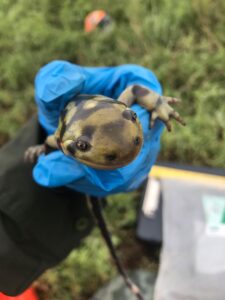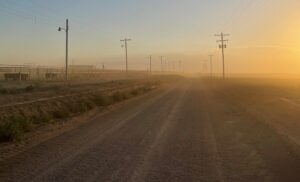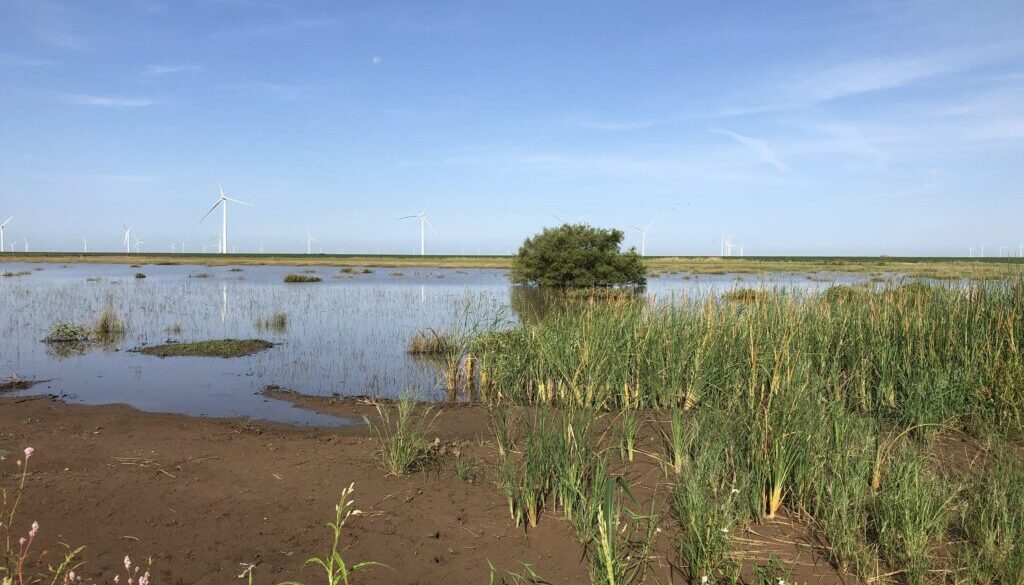Pesticides from cattle feedlots may threaten Texas wetlands
Across northwest Texas, from the panhandle south past Midland, nearly 20,000 shallow, watery basins dot the landscape. Locals call them mud holes, buffalo wallows, or lagoons, but they are technically known as playas. As oases in the landscape, these wetland areas act as recharge points for the Ogallala Aquifer and play a critical role in sustaining life in northwest Texas.
Another mainstay of northwest Texas are the cattle farms that sprawl across the flatland. Texas boasts 14% of the nation’s cattle — about 13 million animals — and cattle operations make up more than half the market value produced by Texas farmers, bringing in billions of dollars in sales each year.
But now, new research is adding evidence that pesticides used at cattle feed lots to protect animals from potentially disease-carrying insects may be posing a dire threat to the ecosystems of the playas.
Researchers from Texas Tech University report in a paper published in Environmental Pollution that insecticides known as pyrethroids were detected in sediment from 75% of the 33 basins sampled. The concentration of pyrethroids detected correlated with the wetland’s proximity to a feedlot — the closer the wetland was to a feedlot, the higher the pyrethroid concentration in the sediment.
Researchers say the pesticide concentrations found were toxic to two invertebrate species found in playas. Invertebrates are often used as “bioindicators” the health of other animals in an ecosystem. Since other wildlife rely on playa invertebrates for food, the toxic effects could eventually impact the stability of the whole playa ecosystem.

Pesticides and playas
Amanda Emert, the lead author on the paper and a graduate student at Texas Tech University, said the levels of pyrethroids they found in the sampling were “unexpected.”
Additionally, said Emert, since their study analyzed the pyrethroids separately, the results don’t account for possible interactions between chemicals, which could have a more harmful effect. The results, therefore, are probably an underestimate of potential toxicity to wildlife, according to Emert and Smith.
Previous research by Smith’s lab in 2020 found that the contaminated dust traveled at least 3 km away from feedlots. Emert said it’s possible that contaminated dust could travel farther than that, and the team is currently working on research to determine if dust travels up to 10km. “We don’t know how far these particulates go,” said Smith.
The 2020 study also found that every single sample contained at least one indicator of pesticides, while pesticides boscalid, permethrin, and piperonyl butoxide were detected at every sampling site.
The team determined that if their results were projected to the whole country, the concentrations of pesticides in feedlot dust were high enough to kill over a billion honey bees every day. Smith and others have also found veterinary pharmaceuticals and antibiotic-resistant genes in dust downwind of cattle feedlots.
The Texas Cattle Feeders Association did not respond to requests for comment.
Protections for playas
Despite the evidence that these insecticides travel via dust from cattle feedlots, kicked up by dry Texas weather and westerly winds, pesticide regulations in Texas don’t protect against the transport of insecticides from cattle feedlots, leaving the playas vulnerable.
Dust transport is an “unrecognized and underappreciated” source of pesticide emissions into the environment, said Philip Smith, a professor of environmental toxicology at Texas Tech University and an author on the new study.
“They [regulators]don’t really recognize that this is, in fact, an issue,” said Smith.

Regulations on feedlot pesticides, as well as legal protections for playas, are weak. According to Sonja Swiger, an extension specialist with Texas A&M University, the insecticides that Texas cattle farmers use are classified as “general use,” meaning farmers are not required to get a pesticide applicator license from the Texas Department of Agriculture in order to spray.
The Texas Commission on Environmental Quality (TCEQ) is responsible for regulating pesticide use that may affect water bodies in the state, and prevents cattle feedlots from operating near water bodies. However, under Texas law, playas are not considered “waters of the state” but rather “surface waters,” making them exempt from protections from TCEQ and allowing cattle feedlots to be built nearby. The agency does require cattle feedlots to manage their dust to “minimize nuisance conditions” by sprinkling farm roads with water or dust suppressants and paving roads and parking lots.
US Environmental Protection Agency regulations don’t protect playas from feedlot insecticides, as they don’t meet requirements for coverage under the Clean Water Act.
Alongside the concerns about for the health of the playas are concerns about the health of people living downwind from feedlots. Though it is not clear how pesticides in feedlot dust may be impacting nearby communities, there are mounting concerns. One Texas citizen action group called Downwinders at Risk is urging state officials to address feedlot dust concerns.
“Breathing this stuff is bad news,” said Jim Schermbeck, director of the Downwinders group. “There’s no question.”
(Featured image: A playa wetland in the Texas Tech researchers’ study area. Photo by: Danielle Husband).
 EWG
EWG


